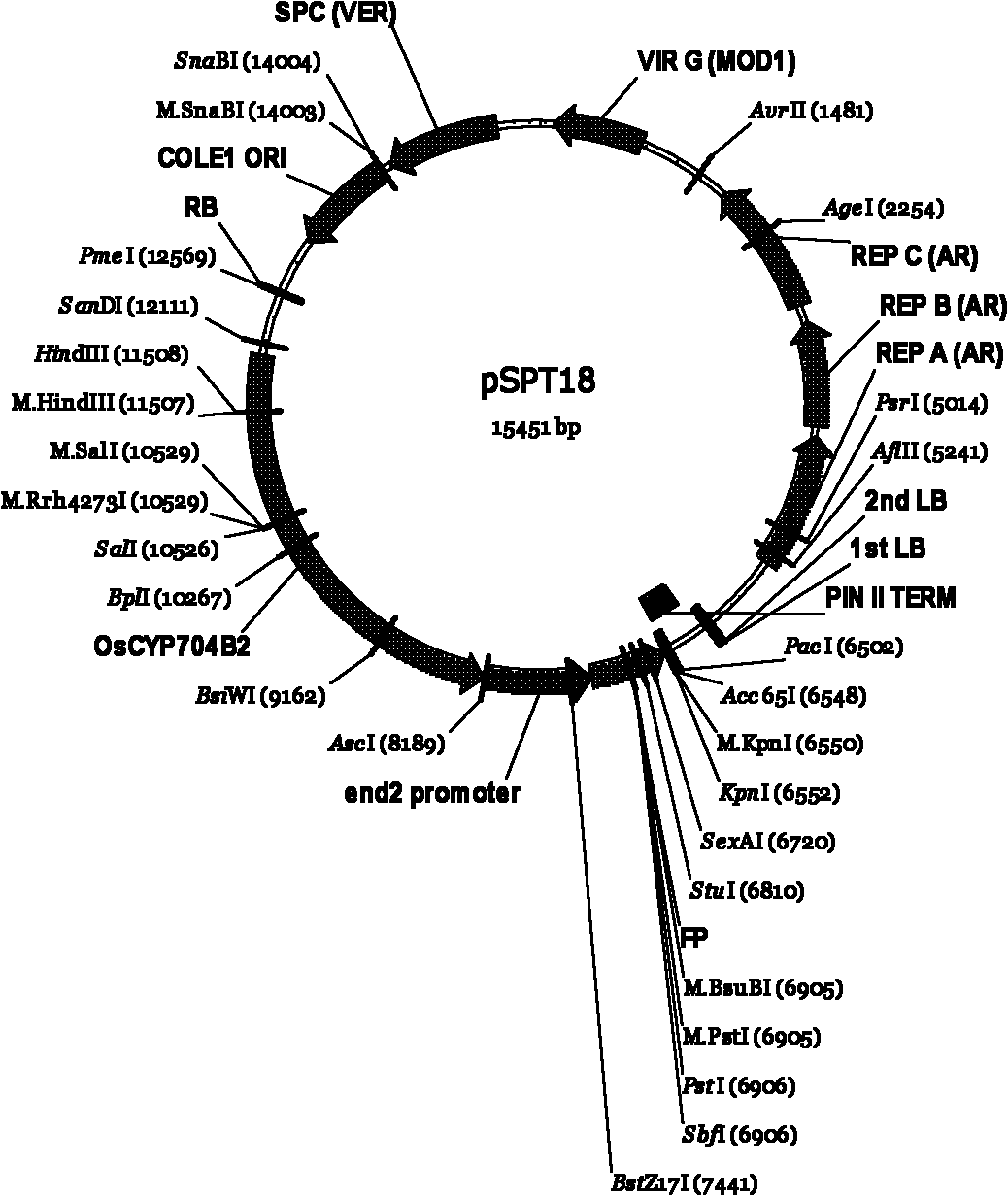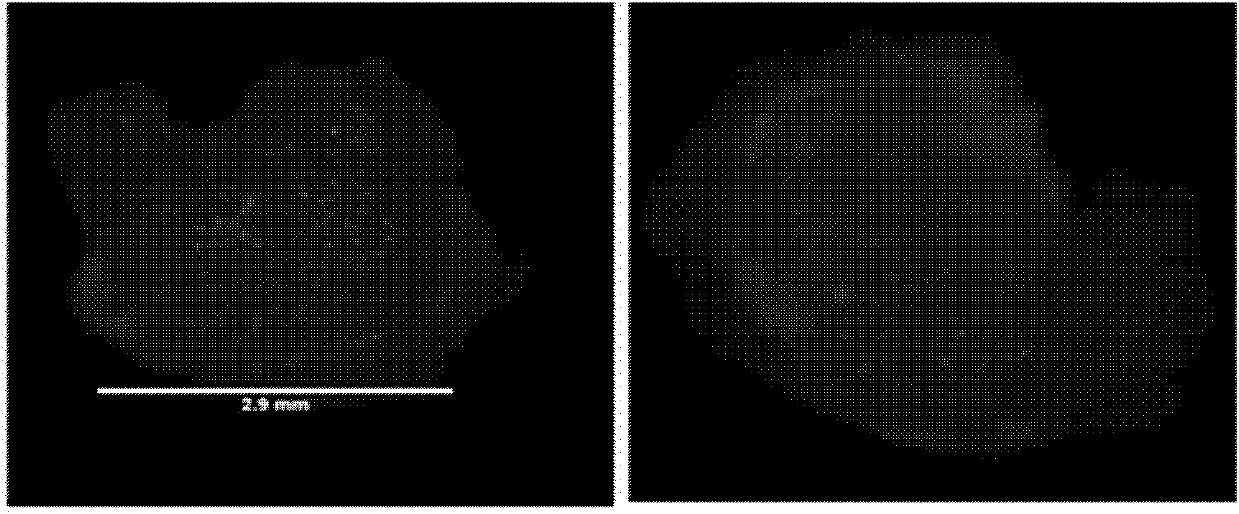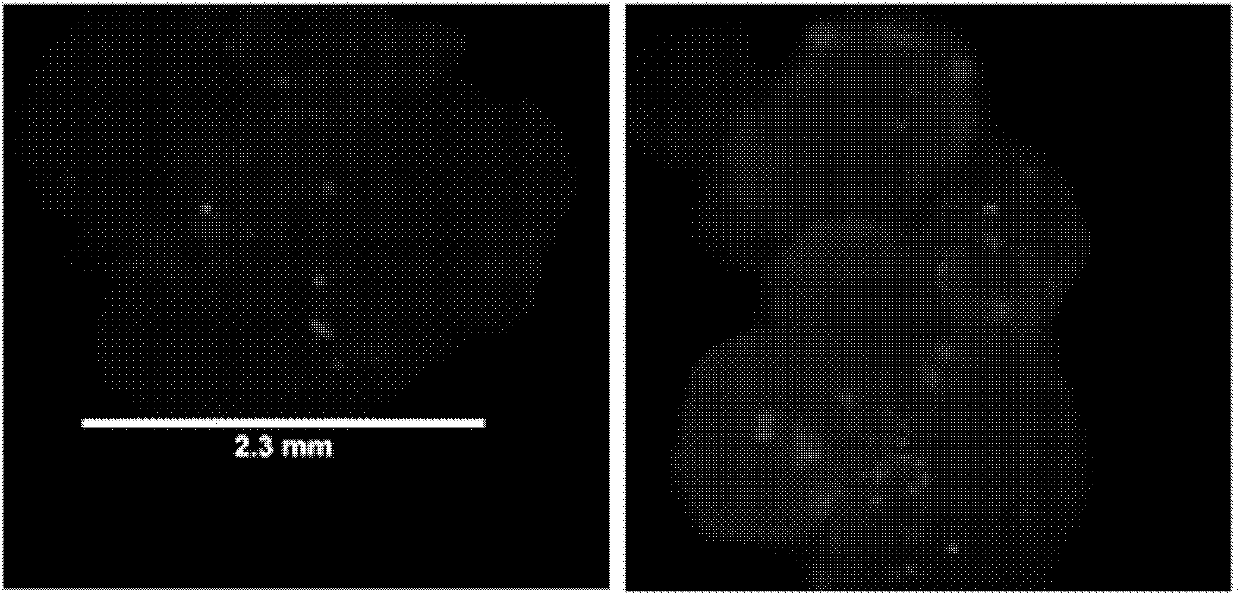Transformation method utilizing red fluorescent protein as selection marker of rice transformation
A genetic transformation method and a technology for screening marker genes, which are applied in the biological field to achieve high reliability results
- Summary
- Abstract
- Description
- Claims
- Application Information
AI Technical Summary
Problems solved by technology
Method used
Image
Examples
Embodiment 1
[0024] Example 1: Construction of expression vectors
[0025] The name of the expression vector used for transformation in the present invention is pSPT18 ( figure 1 ). The vector is artificially constructed on the basis of pPZP. There are two gene expression cassettes on the expression vector: one is the OsCYP704B2 gene expression cassette, which is composed of the OsCYP704B2 gene and its own endogenous promoter and terminator. In order to distinguish the endogenous OsCYP704B2 gene of rice itself from the OsCYP704B2 gene transformed into rice through an expression vector, three single nucleotide mutation sites (SNP) were introduced into the wild-type allele OsCYP704B2 and transformed into rice. The two SNPs were located at the 1468th, 1470th and 1473rd base respectively, all of which were mutated from G to C. None of these changes affected the encoded amino acid sequence. The nucleotide sequence of the modified OsCYP704B2 gene is shown in SEQ ID NO.3, wherein the SNP is m...
Embodiment 2
[0027] Embodiment 2: rice transformation
[0028]The following steps have been taken:
[0029] 1. Seed disinfection
[0030] 1. Soak rice seeds with skin removed in 95% ethanol for 2-3 minutes;
[0031] 2. Rinse in 40% sodium hypochlorite solution containing Tween (40ul, 20%Tween / 100ml) for 15 minutes, replace the rinse solution once, and continue rinsing for 15 minutes;
[0032] 3. Rinse in 40% sodium hypochlorite solution without Tween for 15 minutes, replace the rinse solution, and continue rinsing for 15 minutes;
[0033] 4. Rinse the seeds 4 times with sterile water.
[0034] 2. Callus induction
[0035] Calli were induced for 11 days in a light incubator at 32°C.
[0036] 3. Agrobacterium transformation
[0037] 1. Pick a single colony, connect it to 25ml of freshly prepared Agrobacterium culture medium (with antibiotics added), shake culture overnight at 250-300 RPM at 28°C, and expand the Agrobacterium to 0.3<OD550<1.0;
[0038] 2. Centrifuge the bacterial solut...
Embodiment 3
[0052] Embodiment 3: PCR detection of transgenic plants
[0053] The leaves of the transgenic rice plants in Example 4 were taken, and the total DNA was extracted. Using the FP gene sequence as a template, primers were designed to amplify the genomic DNA of T0 transgenic rice by PCR. The fragment of the amplified product is 789bp. The amplification program was: 94°C 10min; 94°C 1min, 60°C 1min, 72°C 1min; 37 cycles; 72°C 10min. The forward primer sequence is 5'-GGACTTGAACTCCACCAGG-3'; the reverse primer sequence is: 5'-ATAATGCCAATACGACACC-3'. attached Figure 7 It is the PCR amplification result of some transgenic plants, indicating that the exogenous gene has been integrated into the rice recipient genome.
PUM
 Login to View More
Login to View More Abstract
Description
Claims
Application Information
 Login to View More
Login to View More - R&D
- Intellectual Property
- Life Sciences
- Materials
- Tech Scout
- Unparalleled Data Quality
- Higher Quality Content
- 60% Fewer Hallucinations
Browse by: Latest US Patents, China's latest patents, Technical Efficacy Thesaurus, Application Domain, Technology Topic, Popular Technical Reports.
© 2025 PatSnap. All rights reserved.Legal|Privacy policy|Modern Slavery Act Transparency Statement|Sitemap|About US| Contact US: help@patsnap.com



